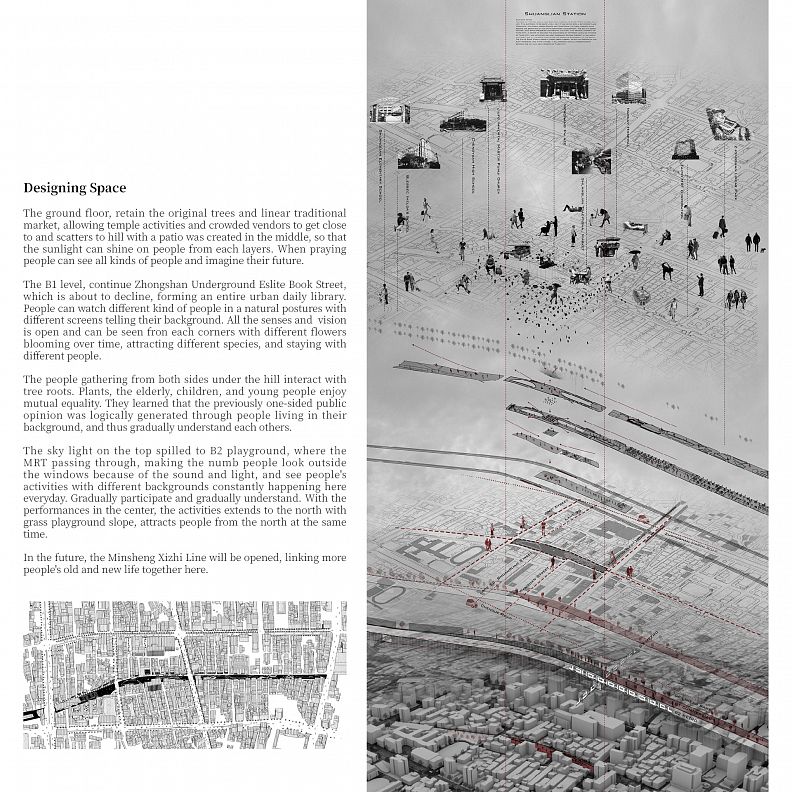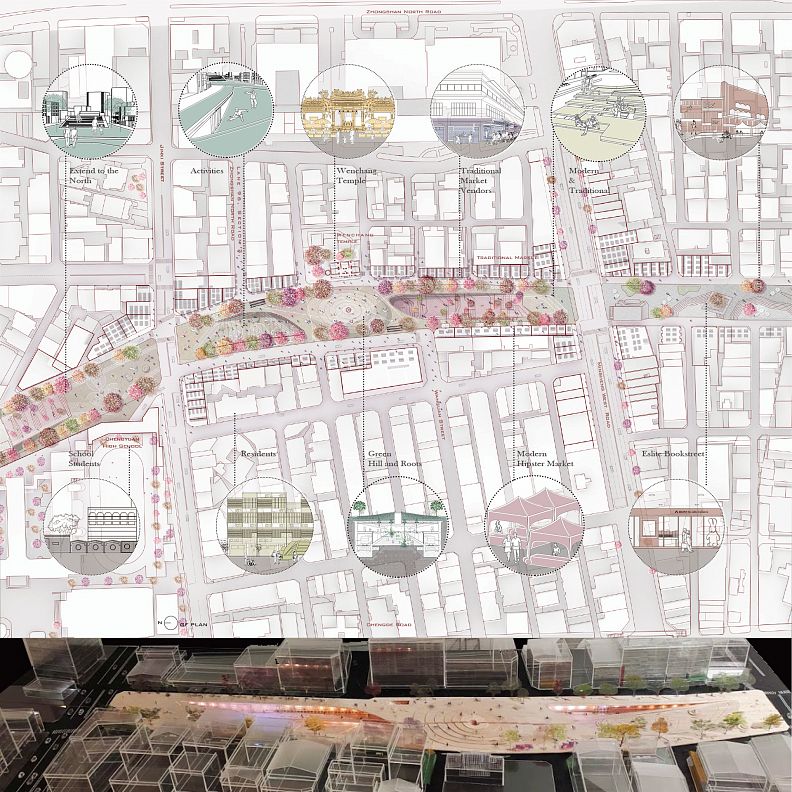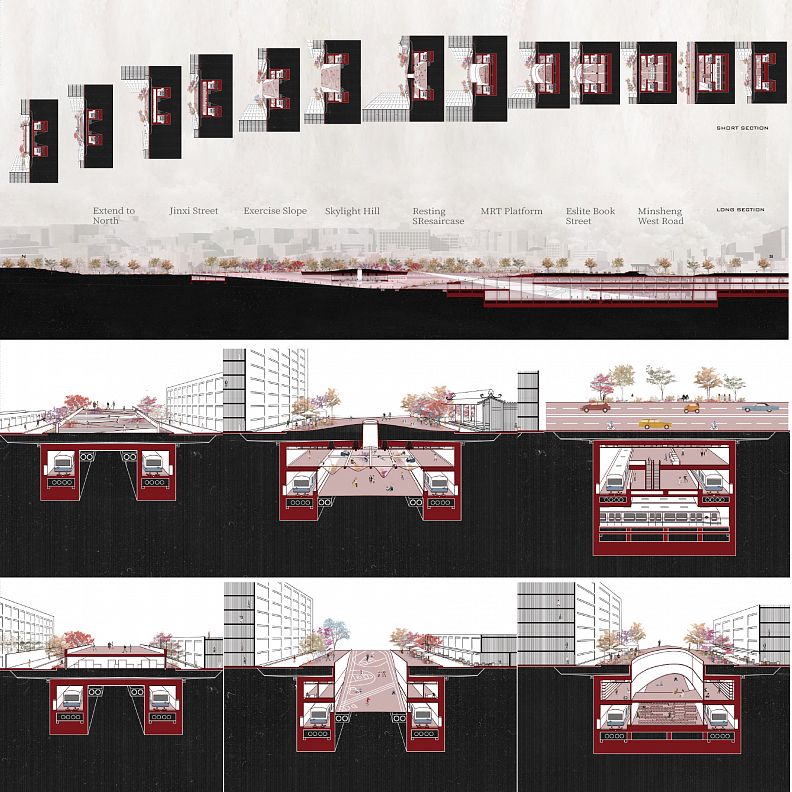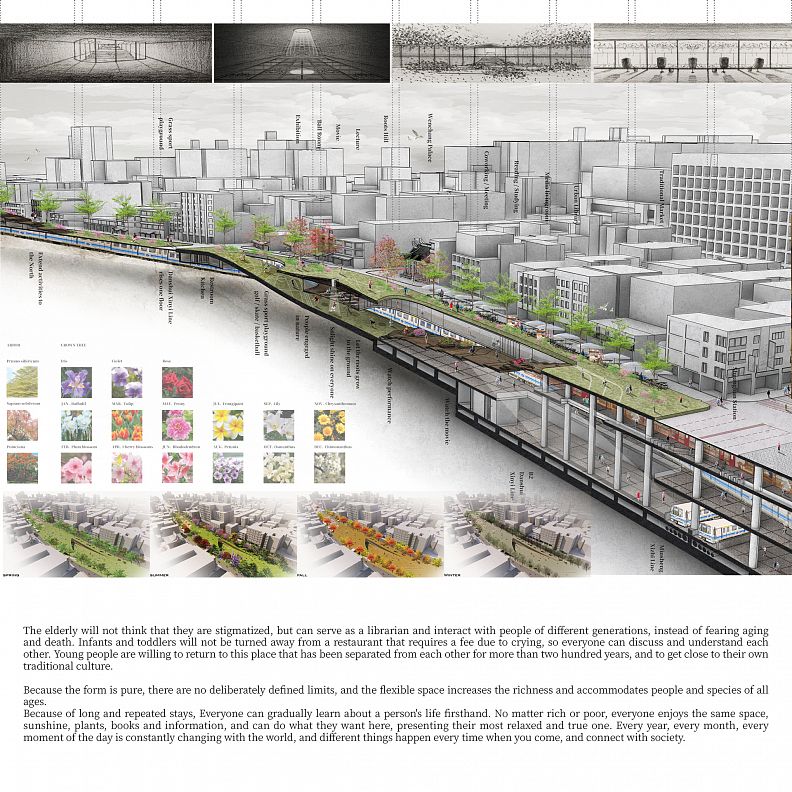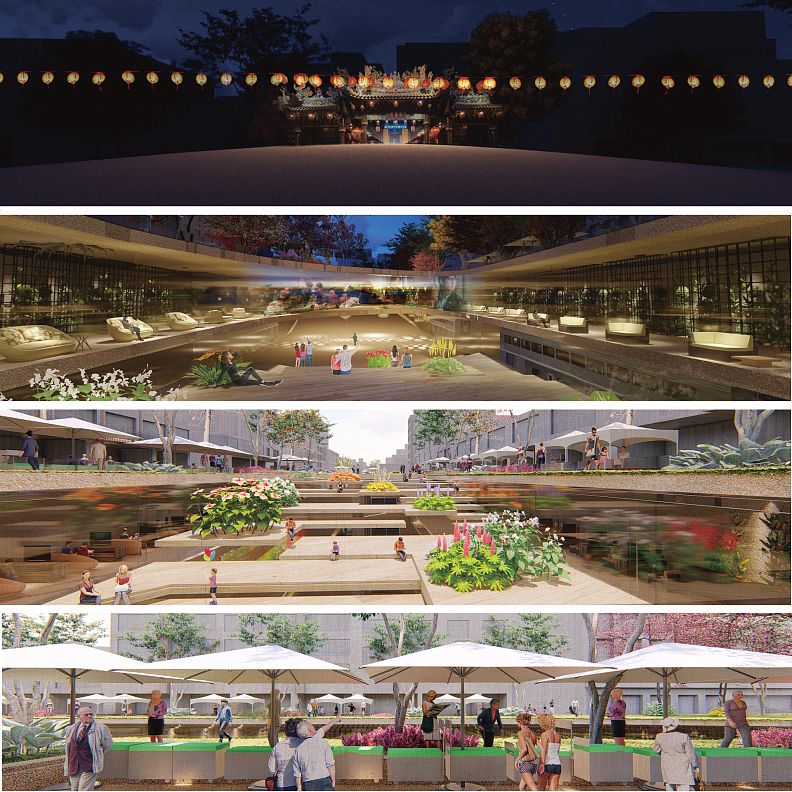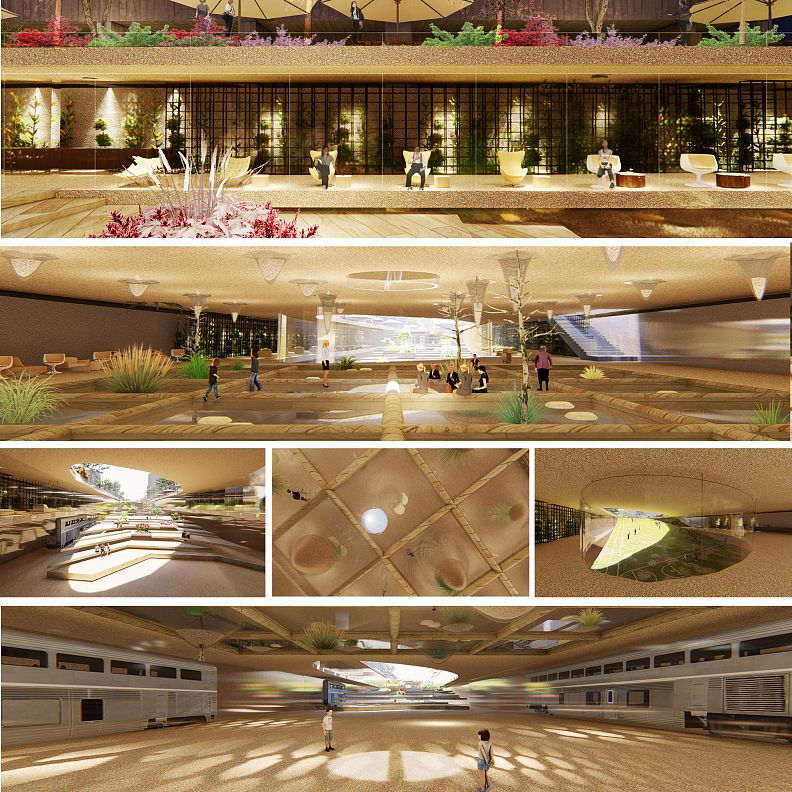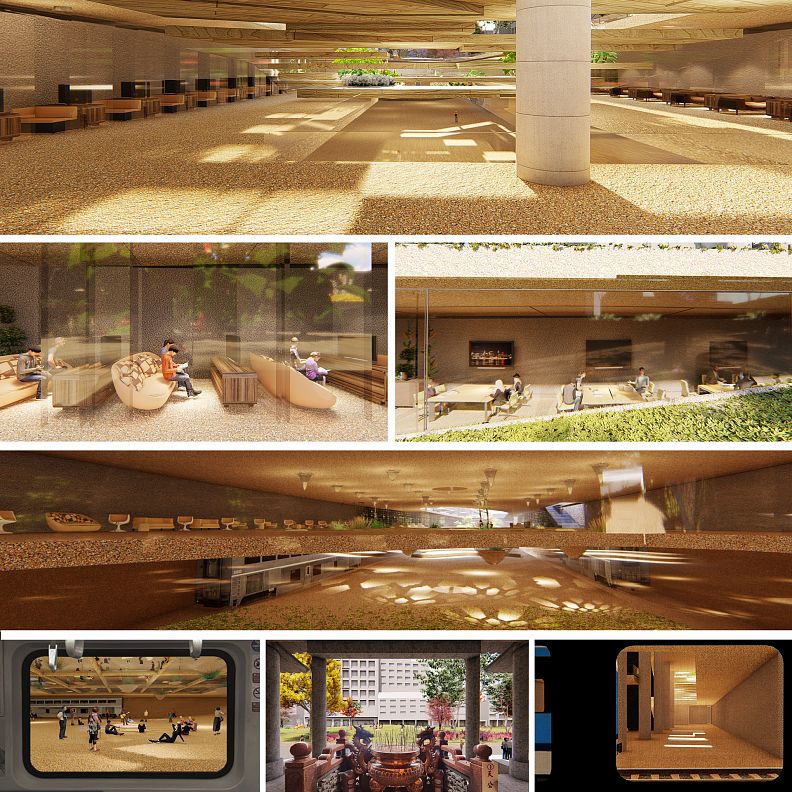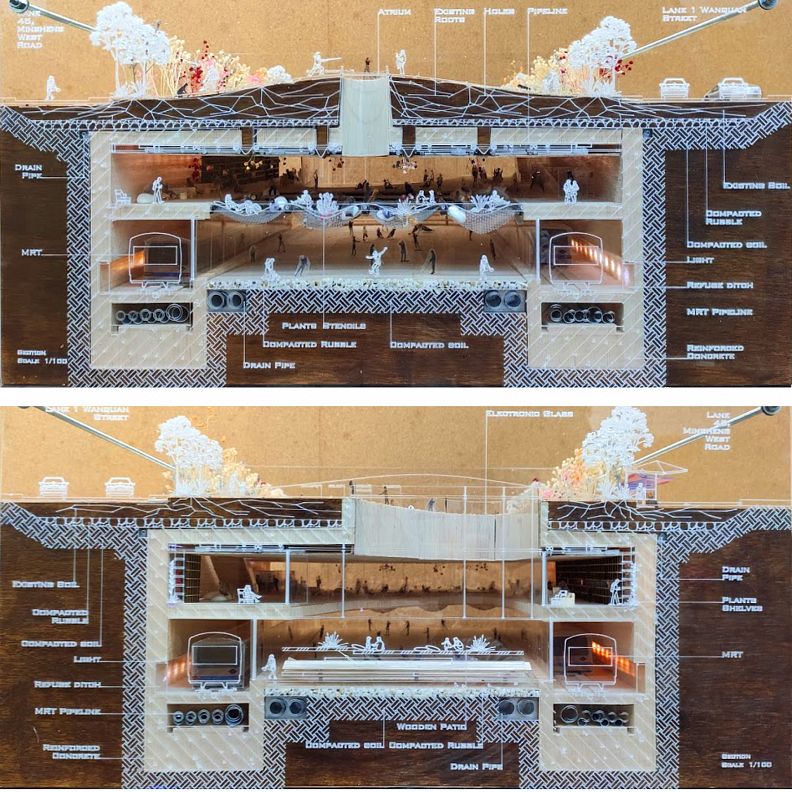MAX Civic Space

Project idea
Nowadays, though the resources are circulated efficiently, society is atomized, and thus causes a regional decline in the end.
Shuanglian Station has been the most diverse place in Taipei city since ancient times. However, it has blocked everything, including nature, prosperity, different kinds of people, activities for so long by grassy lawn. I try to figure out the balance between nature and humans, to let both of them get benefits.
Project description
The site is at Shuanglian Station in Taipei City. According to big data analysis, Shuanglian station is the only place with the most traditional, modern, and lively spots; However, the site evolving as an unwilling grassy boundary sets the new and old apart and also resists the rich prosperity from the south region because of the uprising MRT.
I input the non-intervening civic space to heal the wound with original diversity surrounded. It lengthens the staying time of people passing by here by MRT every day.
The program is pressed under the ground, so that the ground layer retains its original appearance, does not interfere with the original diversity of the place, and therefore gathers The people. At the same time, it also breaks the relationship between the upper and lower MRT stations and extends the Zhongshan Underground Street to the north. I retains the hill in front of Wenchang Palace on the ground floor, and uses the pattern created by passing people to guide people into the east (new) and west (old) sides to understand the lives of the different people.
Everyone has the same space, sunlight, plants, books, and information, and does everything they want here. Hence, they can understand different kinds of citizens' lives over time. Moreover, it connects Eslite book street from South to North and becomes an urban linear library with original nature remained and prospering.
In the future, the Minsheng Xizhi Line will connect more kinds of people passing by here. Everything keeps changing over time, and the results after the design can truly complete the design itself.
Technical information
The soil covering in front of Wenchang Palace gathered the roots of all the surrounding trees, so it could not be developed. Here, the preservation of natural ecological or traditional cultural diversity seems to be unable to coexist with the promotion of the prosperity and development of urban activities. So I started to study the coexistence relationship between plants and the building equipment. The roots of the tree grow towards the shallow soil than the deep soil, rather than constantly growing into the deep, anaerobic soil. At the same time, the breeding of root microorganisms promotes the roots to compete with other plants instead of unbridled growth. The meristem at the top of the roots promotes the growth of the roots, and the root hairs at the extension are responsible for absorbing nutrients, so they can continue to grow through the open layers.
The form of opening underground can make the root hill that was originally blocked by the underground MRT equipment and gather all the surrounding tree roots to grow downward. The roots of the slightly covered soil will not stagnate due to the anaerobic deep soil. The opening approach allows plants to absorb nutrients better and grow more freely. At the same time, it is also convenient for people to define the space with multi-functional elastically. The free balance achieved by such permissiveness continues to operate, cuts off unnecessary growth and continues to grow, plants can grow taller, and allow more sunlight to enter in, to achieve a balance with people’s activities and benefit from each other.






